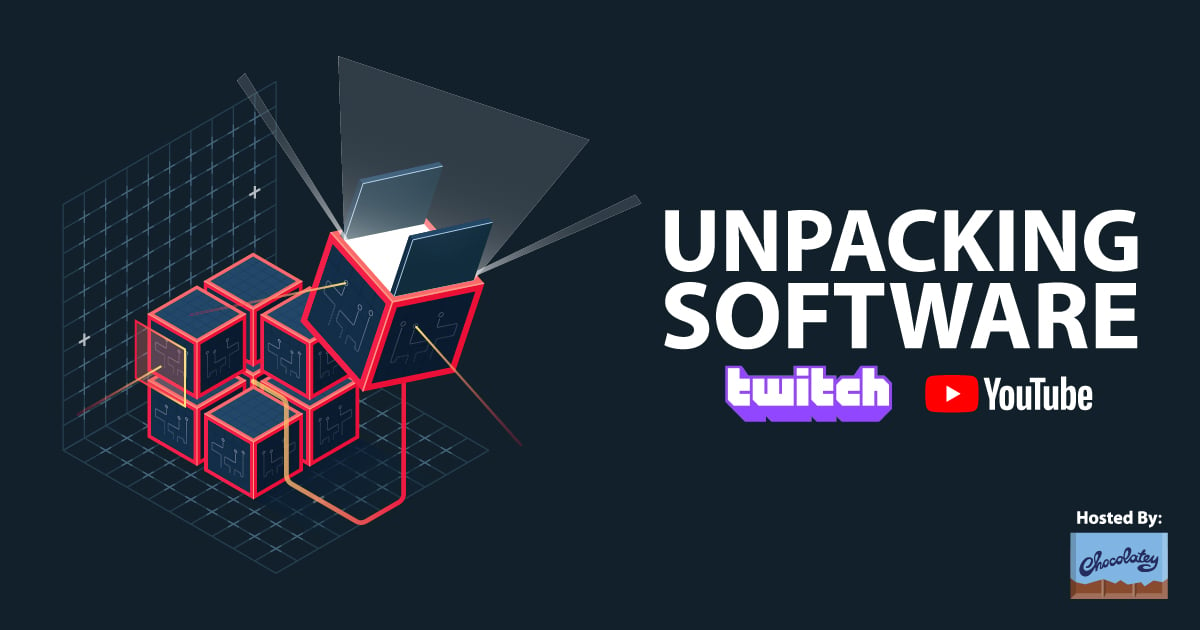
Downloads:
2,836
Downloads of v 1.0.2:
629
Last Update:
22 Jul 2023
Package Maintainer(s):
Software Author(s):
- Paul Broadwith
Tags:
- Software Specific:
- Software Site
- Software Source
- Software Docs
- Software Issues
- Package Specific:
- Package Source
- Package outdated?
- Package broken?
- Contact Maintainers
- Contact Site Admins
- Software Vendor?
- Report Abuse
- Download
Nexus - Create Chocolatey Repository
- 1
- 2
- 3
1.0.2 | Updated: 22 Jul 2023
- Software Specific:
- Software Site
- Software Source
- Software Docs
- Software Issues
- Package Specific:
- Package Source
- Package outdated?
- Package broken?
- Contact Maintainers
- Contact Site Admins
- Software Vendor?
- Report Abuse
- Download
Downloads:
2,836
Downloads of v 1.0.2:
629
Maintainer(s):
Software Author(s):
- Paul Broadwith
Nexus - Create Chocolatey Repository 1.0.2
Legal Disclaimer: Neither this package nor Chocolatey Software, Inc. are affiliated with or endorsed by Paul Broadwith. The inclusion of Paul Broadwith trademark(s), if any, upon this webpage is solely to identify Paul Broadwith goods or services and not for commercial purposes.
- 1
- 2
- 3
This Package Contains an Exempted Check
Not All Tests Have Passed
Deployment Method: Individual Install, Upgrade, & Uninstall
To install Nexus - Create Chocolatey Repository, run the following command from the command line or from PowerShell:
To upgrade Nexus - Create Chocolatey Repository, run the following command from the command line or from PowerShell:
To uninstall Nexus - Create Chocolatey Repository, run the following command from the command line or from PowerShell:
Deployment Method:
This applies to both open source and commercial editions of Chocolatey.
1. Enter Your Internal Repository Url
(this should look similar to https://community.chocolatey.org/api/v2/)
2. Setup Your Environment
1. Ensure you are set for organizational deployment
Please see the organizational deployment guide
2. Get the package into your environment
Option 1: Cached Package (Unreliable, Requires Internet - Same As Community)-
Open Source or Commercial:
- Proxy Repository - Create a proxy nuget repository on Nexus, Artifactory Pro, or a proxy Chocolatey repository on ProGet. Point your upstream to https://community.chocolatey.org/api/v2/. Packages cache on first access automatically. Make sure your choco clients are using your proxy repository as a source and NOT the default community repository. See source command for more information.
- You can also just download the package and push it to a repository Download
-
Open Source
-
Download the package:
Download - Follow manual internalization instructions
-
-
Package Internalizer (C4B)
-
Run: (additional options)
choco download chocolatey-nexus-repo --internalize --source=https://community.chocolatey.org/api/v2/ -
For package and dependencies run:
choco push --source="'INTERNAL REPO URL'" - Automate package internalization
-
Run: (additional options)
3. Copy Your Script
choco upgrade chocolatey-nexus-repo -y --source="'INTERNAL REPO URL'" [other options]See options you can pass to upgrade.
See best practices for scripting.
Add this to a PowerShell script or use a Batch script with tools and in places where you are calling directly to Chocolatey. If you are integrating, keep in mind enhanced exit codes.
If you do use a PowerShell script, use the following to ensure bad exit codes are shown as failures:
choco upgrade chocolatey-nexus-repo -y --source="'INTERNAL REPO URL'"
$exitCode = $LASTEXITCODE
Write-Verbose "Exit code was $exitCode"
$validExitCodes = @(0, 1605, 1614, 1641, 3010)
if ($validExitCodes -contains $exitCode) {
Exit 0
}
Exit $exitCode
- name: Install chocolatey-nexus-repo
win_chocolatey:
name: chocolatey-nexus-repo
version: '1.0.2'
source: INTERNAL REPO URL
state: present
See docs at https://docs.ansible.com/ansible/latest/modules/win_chocolatey_module.html.
chocolatey_package 'chocolatey-nexus-repo' do
action :install
source 'INTERNAL REPO URL'
version '1.0.2'
end
See docs at https://docs.chef.io/resource_chocolatey_package.html.
cChocoPackageInstaller chocolatey-nexus-repo
{
Name = "chocolatey-nexus-repo"
Version = "1.0.2"
Source = "INTERNAL REPO URL"
}
Requires cChoco DSC Resource. See docs at https://github.com/chocolatey/cChoco.
package { 'chocolatey-nexus-repo':
ensure => '1.0.2',
provider => 'chocolatey',
source => 'INTERNAL REPO URL',
}
Requires Puppet Chocolatey Provider module. See docs at https://forge.puppet.com/puppetlabs/chocolatey.
4. If applicable - Chocolatey configuration/installation
See infrastructure management matrix for Chocolatey configuration elements and examples.
This package was approved by moderator Windos on 23 Jul 2023.
Creates a NuGet repository under Nexus for use with Chocolatey.
You can pass the following parameters (to not log sensitive parameters, replace --params with --package-parameters-sensitive below):
/ServerUri- The Uri of your Nexus server. Defaults tohttps://localhost:8081(e.g.--params="'/ServerUri=http://localhost:8081'");/Username- [Required] Username with permissions to create repositories and add the NuGet Realm on your Nexus server (e.g.--params="'/Username=admin'");/Password- [Required or use /EnterPassword] Password for the username parameter (e.g.--params="'/Username=admin /Password=abc'");/RepositoryName- The name to use for the created repository. Defaults tochoco-base(e.g.--params="'/RepositoryName=my-repo'");/BlobStoreName- Name of the blob store to create the repository on. Defaults todefault. (e.g.--params="'/BlobStoreName=myblob'");/EnterPassword- [Required or use /Password] Prompts you to enter a password when installing the package (e.g.--params"'/EnterPassword'") ;
NOTE: Uninstalling this package does not remove the repository created or disable the NuGet Realm in Nexus. This must be done manually.
Log in or click on link to see number of positives.
In cases where actual malware is found, the packages are subject to removal. Software sometimes has false positives. Moderators do not necessarily validate the safety of the underlying software, only that a package retrieves software from the official distribution point and/or validate embedded software against official distribution point (where distribution rights allow redistribution).
Chocolatey Pro provides runtime protection from possible malware.
| Add to Builder | Version | Downloads | Last Updated | Status |
|---|---|---|---|---|
| Nexus - Create Chocolatey Repository 1.0.2 | 629 | Saturday, July 22, 2023 | Approved | |
| Nexus - Create Chocolatey Repository 1.0.1 | 1465 | Monday, June 15, 2020 | Approved | |
| Nexus - Create Chocolatey Repository 1.0.0 | 742 | Thursday, September 19, 2019 | Approved |
2019 Chocolatey Software
This package has no dependencies.
Ground Rules:
- This discussion is only about Nexus - Create Chocolatey Repository and the Nexus - Create Chocolatey Repository package. If you have feedback for Chocolatey, please contact the Google Group.
- This discussion will carry over multiple versions. If you have a comment about a particular version, please note that in your comments.
- The maintainers of this Chocolatey Package will be notified about new comments that are posted to this Disqus thread, however, it is NOT a guarantee that you will get a response. If you do not hear back from the maintainers after posting a message below, please follow up by using the link on the left side of this page or follow this link to contact maintainers. If you still hear nothing back, please follow the package triage process.
- Tell us what you love about the package or Nexus - Create Chocolatey Repository, or tell us what needs improvement.
- Share your experiences with the package, or extra configuration or gotchas that you've found.
- If you use a url, the comment will be flagged for moderation until you've been whitelisted. Disqus moderated comments are approved on a weekly schedule if not sooner. It could take between 1-5 days for your comment to show up.









 Ansible
Ansible

 PS DSC
PS DSC

